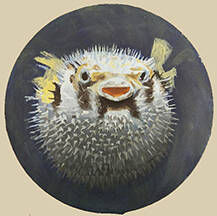It's REAL artwork!



From Mid-August 2025 to May 2026 lessons are by appointment. (June, July, and August feature summer camps and Summer Saturdays and are not included.)
During September to May Homeschool Classes are scheduled during the day on weekdays and vary in availability. Call or text for current days of the week and times. Homeschool classes are customized to fit your child's needs or wants. Whether you have a teen wanting to learn to draw or 6 year old twins who need help with scissors and holding tools or some in-betweens who want it all from painting to paper mâché. It's sprinkled with kid friendly art history and they learn to draw and paint and create with confidence. Click here for more information.
During June, July & August, summer art camps are offered weekly so a project may be completed in 4 days rather then once a week for 4 weeks. Summer Saturdays are once a week on Saturdays during June, July & August in packages of four lessons, 90 minute each. For more summer information, click here on Summer Camp.
Below are class descriptions:
Art Essentials for Ages 6 to 9
I call the course Art Essentials because it take the students through everything that is essential to know in art with a strong emphasis on drawing.
The Art Essentials Sessions incorporate color and various media into projects designed to teach students how to use different techniques and build recognition of spacial relationships.
Design concepts and vocabulary with art history at the high school level are introduced in manageable amounts that allow students to express the natural creativity of this age while learning new things!
I keep records of progress and tailor activities to each individual child hence allowing this course to increase in challenge as long as the student wants to study art with me.
Students are taught drawing & painting techniques in small stages.
The student pictured to the left did his own under drawing without tracing. He is using the grid system established several hundred years ago during the Renaissance period for teaching apprentices how to draw quickly. His original drawing is pictured also. He is painting the piece himself.
His finished piece is in acrylic. He is 6 years old.
At this age, students are developing at all different rates, so lessons are designed to fit their needs as well as what they want to do. Some students will not exhibit this amount of focus until they are much older. I introduce levels of challenge as each student grows.
Students are given a sense of pride and self worth by completing artwork that they didn't think they could do! They learn chunks of art history, color theory and proportion without even realizing it.
Just Remember: Art should be fun!


Art Lessons Ages 8-14
START HERE IN DRAWING:
All students who are old enough start with a self-portrait. One of the most difficult things to draw is a portrait. By tackling this first, students show themselves they can accomplish anything. Portrait drawing also lends itself well to teaching shading, spacial perspective and value judgment--all the skills needed to draw other subjects and work in other media. Portraits can take four to five lessons to complete.
The small drawings on the right are the first day samples each student does the first day. The larger drawings are the 18x24 self portrait final pieces.



WHAT'S NEXT AFTER MY PORTRAIT?
Advanced Graphite Drawing
Advanced drawing is a logical step next because it takes the techniques students learned during portrait drawing and applies them to other subjects, such as animals, vehicles, landscape (perspective), or more portraits.




Ink Drawing
Focused on learning Ink techniques and the seven types of line most commonly used in Ink Drawing, the student's first experience is a 5 x 7 piece.
Additional rounds in Ink may be taken to draw other topics. Pieces may be 5 x 7, 8 x 10 or 11 x 14--student choice.
Left 7 Below: Technical Practice by a 10 year old.
Colored Pencil
Students who have completed their portraits may opt to take advanced graphite drawing and then colored pencil. Beginning colored pencil works are 5 x7 due to difficulty. After their first colored pencil they may do a larger size, use liquid blenders and illustration board and even try their hand at Mixed Media.



Acrylic Painting and Border Painting
Acylic paintng is done on a gallery wrapped stretched canvas 16 x 20 or various round and square ones. If a different size is desired, students may provide their own canvas. Drawing is the foundation of painting, so a good "cartoon" is made before each painting.
BORDER PAINTING
Paintings are 16x20 stretched canvas in acrylic. Drawing is the foundation of all art, so a strong underdrawing is mapped out for the center realistic part of the piece. The border is then composed of abstract painting miniatures based on textures, a technique common in the formulation of abstract works. Students learn how to use items other then brushes, such as combs or erasers to create special effects. Often times creating 3D touchable art on the surface of the canvas. Each one is a unique creation. This course may be repeated multiple times.
LANDSCAPE PAINTING
Paintings are on 16x20 stretched canvas in acrylic, or if we have extra frames, students may choose to make a framed work. This camp may be taken after regular acrylic painting. Students learn about perspective and the unique way a landscape artist looks at the world around us. Students learn a different way to map out their work before starting to paint.






